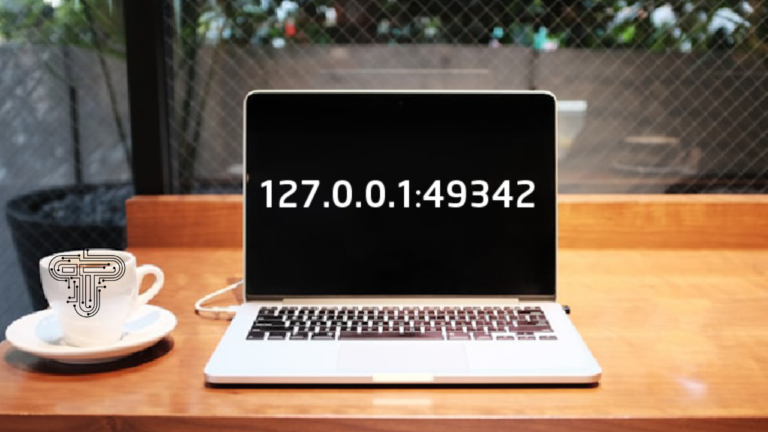How Vibe Coding Is Reshaping Creative Collaboration in the Digital Workspace
Defining Vibe Coding: Where Logic Meets Aesthetics
Vibe coding is a new way of building software. It mixes technical skill with how things feel and look. It’s about making code that works well and also feels right to use. This approach sees development not just as writing lines of code, but as a creative act. The goal is to make the process smooth and the end product pleasing.
It’s a shift from just getting things done to getting them done with a certain quality and feel. This means paying attention to details that might seem small, like how a button animates or how colors work together. Vibe coding suggests that these aesthetic choices are not just for show; they are part of the overall functionality and user experience. It’s about finding that sweet spot where the logic of the code and the aesthetics of the application come together.
This method is gaining traction because it acknowledges that developers are human. They have moods, preferences, and respond to their environment. By considering these human factors, vibe coding aims to create better software. It’s a blend of art and science, logic and intuition, all working together.
The Shift From Grind Culture To Flow Culture
Traditional development often focused on long hours and pushing through tasks, sometimes called ‘grind culture’. Vibe coding offers an alternative: ‘flow culture’. This is about creating conditions where developers can get into a state of deep focus, where work feels less like a chore and more natural. It’s about working smarter, not just harder.
This shift means looking at how tools, environments, and even personal habits can help a developer achieve this flow state. Think about having the right music playing, a comfortable workspace, or tools that just seem to understand what you need. When a developer is in flow, they can solve problems faster and come up with more creative solutions. This is a key part of vibe coding.
It’s not about avoiding hard work, but about making that work more effective and enjoyable. By reducing friction and distractions, developers can spend more time in that productive, focused zone. This leads to better code and a more sustainable way of working.
AI-Powered Development Environments
AI is a big part of vibe coding. Modern development environments are increasingly built with AI assistance. These tools can help with writing code, suggesting solutions, and even spotting potential problems before they happen. This makes the development process faster and more intuitive.
These AI tools are designed to work with the developer, not replace them. They act like smart assistants, helping to scaffold ideas and speed up repetitive tasks. The developer’s role shifts to guiding the AI, refining its output, and making the final decisions. This partnership is central to the vibe coding approach.
By integrating AI, development environments become more dynamic. They can adapt to the developer’s style and needs, creating a more personalized and efficient workflow. This makes building software feel more like a conversation and less like a rigid process. The aim is to make the entire development experience more fluid and productive.
When Vibe Coding Excels In Practice
Vibe coding really shines in specific scenarios where speed and creative iteration are key. It’s not a one-size-fits-all solution, but when the conditions are right, it can dramatically speed up development and bring ideas to life faster than traditional methods.
Rapid Prototyping And Idea Validation
When you’ve got a new idea and need to see if it’s viable, vibe coding is your best friend. You can whip up a working model in a fraction of the time. This means less time spent on setup and more time actually testing your concept. The ability to quickly iterate based on feedback is a major win here. It’s perfect for hackathons or getting a quick demo ready for potential investors. This approach to vibe coding lets you validate assumptions before committing significant resources.
Creative Technology And Design Applications
For folks in design or creative tech, vibe coding opens up new avenues. Imagine a designer wanting to quickly prototype an interactive element for a website or an artist creating a dynamic visual installation. Vibe coding tools, often powered by AI, can translate natural language or visual concepts into functional code. This blurs the lines between design and development, allowing for more fluid experimentation. It’s about bringing creative visions to life without getting bogged down in complex syntax.
Enhancing Educational Environments For Beginners
Learning to code can be intimidating. Vibe coding offers a gentler entry point. By abstracting away some of the more complex, low-level details, beginners can focus on the logic and the creative outcome. This makes the learning process more engaging and less frustrating. Instead of getting stuck on syntax errors, students can experiment and build things, fostering a more positive and productive learning experience. This makes vibe coding a great tool for introductory programming courses.
The Role Of Aesthetics And Environment In Vibe Coding
Curating A Productive Coding Atmosphere
Think about your workspace. Is it just a desk, or is it a place that sparks ideas? Vibe coding suggests that the physical and digital space matters. It’s about setting up your environment so it feels right, making it easier to get into that focused state. This isn’t just about looking good; it’s about feeling good while you work.
This means paying attention to the little things. Maybe it’s a clean desk, maybe it’s a specific lighting setup. For many, it involves personalizing their tools. This could be anything from custom themes in their code editor to the background music playing. The goal is to reduce distractions and create a personal bubble where creativity can flow. This intentional setup is a key part of vibe coding.
It’s about making the act of coding more enjoyable. When the environment supports your mood and focus, the work itself becomes less of a chore and more of a creative pursuit. This deliberate curation of the workspace is central to the vibe coding philosophy.
Aesthetics As A Core Component Of Productivity
It might sound strange, but how things look can actually help you code better. Aesthetics in vibe coding aren’t just for show; they’re part of the productivity toolkit. A well-designed interface or a pleasing color scheme can make a big difference in how long you can stay focused.
The visual appeal of your tools and projects can directly impact your mental state and, consequently, your output. When developers find their coding environment visually engaging, they tend to spend more time in it and feel more motivated. This is why custom themes and visual elements are so popular in the vibe coding community.
This focus on aesthetics acknowledges that developers are human beings with emotional responses. By making the coding experience more pleasant, we can encourage deeper engagement and more innovative solutions. It’s about making the process itself a positive experience.
Integrating Music And Visuals For Creative Flow
Music and visuals are powerful tools for setting a mood. In vibe coding, they’re actively used to help developers get into a state of deep concentration, often called a ‘flow state’. This isn’t just about having background noise; it’s about selecting sounds and sights that help your brain work better.
Different people respond to different things. Some might find instrumental music helps them focus, while others prefer ambient sounds. Visuals, like dynamic wallpapers or even the layout of code itself, can also play a role. The idea is to create a sensory experience that supports the task at hand.
The right audio-visual mix can transform a mundane coding session into an immersive creative journey. It’s about tuning your environment to your personal rhythm, making the complex task of software development feel more intuitive and less taxing. This deliberate use of sensory input is a hallmark of effective vibe coding.
Navigating The Challenges Of Vibe Coding
Addressing Blind Trust In AI-Generated Code
While vibe coding speeds things up, there’s a real risk of just accepting whatever the AI spits out. Developers might skip over crucial checks, letting bugs or security holes slip through. This is fine for a quick personal project, but it can cause big problems when the code goes live. It’s easy to get caught up in the flow and forget the details.
The temptation to trust AI implicitly is strong, but it’s a dangerous path. This blind trust can lead to unexpected issues down the line. It’s important to remember that AI is a tool, not a replacement for critical thinking. We still need to review the code.
This approach to vibe coding needs careful handling. It’s not just about generating code quickly; it’s about generating good code. Without proper oversight, the benefits of vibe coding can quickly turn into liabilities. We need to build systems that encourage review, not bypass it.
Collaboration Friction In Team Settings
Vibe coding often shines in solo work, but bringing it into a team can be tricky. Different people have different ideas about what makes code
The Future Landscape Of Vibe Coding Tools
Emerging Vibe-First IDEs
New development environments are popping up, built from the ground up with vibe coding in mind. These aren’t just standard IDEs with a few AI add-ons. They focus on making the coding process feel good, integrating mood-setting features right into the interface. Think customizable themes that shift with your music, or AI assistants that chat with you more like a creative partner than a tool. The goal is to make the experience of coding as smooth and inspiring as the code itself. This approach to vibe coding is all about making development feel less like a chore and more like an extension of your creative self.
Hybrid Workflows: AI Drafts, Engineers Refine
The future likely involves a mix of AI and human effort. AI will handle the initial heavy lifting, generating code drafts based on prompts and context. Developers then step in to review, refine, and ensure the code is robust, secure, and meets project standards. This hybrid model aims to speed up development significantly without sacrificing quality. It’s about using AI to get to a working prototype faster, then applying human judgment for the critical details. This blend is key to making vibe coding practical for more complex projects.
This collaborative dance between AI and human developers is where the real magic of future vibe coding will happen. It’s not about AI replacing engineers, but about augmenting their capabilities.
AI Code Auditors For Security And Compliance
As AI generates more code, tools that audit this code for security vulnerabilities and compliance issues will become vital. These AI auditors will act as a safety net, catching potential bugs or policy violations before they become problems. They’ll work alongside the AI drafting tools and human reviewers, adding another layer of confidence. This is especially important for projects with strict regulations or sensitive data. The aim is to make AI-assisted development safe and reliable for everyone involved in vibe coding.
Vibe Coding As A New Productivity Paradigm
Rethinking Traditional Productivity Metrics
Vibe coding challenges the old ways of measuring developer output. Forget counting lines of code or commit frequency. This new approach looks at how fast ideas turn into working prototypes. It’s about the speed of iteration and the real impact of the features built. This shift suggests that vibe coding isn’t about slacking off; it’s a different way to get things done.
Companies might need to adjust how they see productivity. Instead of just raw output, they could focus on the idea-to-prototype velocity. This means valuing the quick turnaround from a concept to something tangible. It’s a move away from the ‘grind culture’ towards a more fluid, creative process.
The core idea is to measure what matters: innovation and speed to market. This paradigm shift acknowledges that a developer’s environment and mood can directly impact their effectiveness. It’s a more human-centered view of productivity.
Idea-To-Prototype Velocity
This is where vibe coding really shines. The ability to quickly move from a concept to a functional prototype is a major advantage. AI tools, combined with a developer’s creative flow, can speed this up dramatically. It’s about making the abstract concrete, fast.
Think about hackathons or rapid idea validation. Vibe coding excels here because it prioritizes getting something working and visible. The focus is on the journey from thought to form, making the development process feel more dynamic and less like a chore. This rapid prototyping is a key benefit.
This velocity isn’t just about speed; it’s about learning. Quick prototypes allow for faster feedback loops, helping teams refine ideas before investing too much time. It’s a smarter way to build.
Balancing Speed With Thoughtful Development
While speed is a big part of vibe coding, it’s not the only part. The goal isn’t just to code fast, but to code smartly and creatively. This means finding a balance between rapid iteration and making sure the code is sound. It’s about thoughtful development, even when moving quickly.
There’s a risk of AI-generated code having hidden issues. That’s why thoughtful development is key. It involves reviewing the AI’s output, understanding its implications, and making sure it aligns with project goals. It’s a partnership, not just delegation.
Ultimately, vibe coding aims to make development more enjoyable and productive. It’s about finding that sweet spot where speed meets quality, and creativity flows without sacrificing the integrity of the final product. This balance is what makes vibe coding a sustainable new paradigm.
Exploring The Impact Of Vibe Coding Tools

Leveraging AI For Intuitive Software Creation
Vibe coding tools are changing how we think about building software. Instead of just typing lines of code, developers can now work more intuitively with AI assistants. These tools help generate code snippets, suggest completions, and even draft entire functions based on simple prompts. This makes the process feel less like manual labor and more like a creative partnership.
The goal is to make software creation accessible and enjoyable. This approach allows for faster iteration and experimentation, which is great for getting ideas off the ground quickly. Vibe coding tools are designed to understand context and intent, leading to more relevant and useful code suggestions. It’s about making the developer’s life easier and more productive.
This shift means that even people with less traditional coding experience can start building applications. The focus is on the idea and the desired outcome, with the AI handling much of the intricate syntax. It’s a powerful way to bring more creativity into the development process.
The Vibe Coding Tool Advantage
What’s the big deal with these new tools? Well, they speed things up. A lot. Think about getting a prototype ready in hours instead of days. That’s the vibe coding tool advantage in action. They integrate AI directly into the development environment, making it feel natural to ask for help or get suggestions.
- Faster development cycles
- Lower barrier to entry for new coders
- More focus on creative problem-solving
These tools are built to work with you, not just for you. They learn your style and preferences, making the suggestions even better over time. It’s like having a super-smart coding buddy who’s always there to lend a hand.
Vibe coding tools are not just about writing code faster; they’re about changing the experience of coding itself, making it more fluid and expressive.
Transforming The Developer Experience
Ultimately, vibe coding tools are transforming the entire developer experience. They take the tedious parts of coding and let AI handle them, freeing up developers to focus on the bigger picture. This means more time for innovation, design, and problem-solving. The whole feel of coding changes from a chore to something more engaging.
This transformation is especially noticeable in how quickly ideas can be tested. Instead of getting bogged down in syntax errors or boilerplate code, developers can see their concepts come to life rapidly. This iterative process, powered by vibe coding, leads to better final products and a more satisfying development journey. It’s a win-win for developers and the projects they work on.
The Future is Vibing
So, what does all this mean for the future of coding? Vibe coding isn’t likely to replace traditional development entirely, especially in areas where strict rules and long-term stability are paramount. Think big banks or medical software – those probably won’t be “vibing” their code anytime soon. But for rapid prototyping, creative projects, or just getting a quick idea off the ground, it’s a game-changer. It’s about finding a new rhythm in how we build things digitally, making the process feel less like a chore and more like a creative flow. As AI tools get better, we’ll probably see more hybrid approaches, where the “vibe” helps kickstart things and human oversight keeps them on track. It’s a shift, for sure, and one that’s making coding feel a bit more human, a bit more personal.







